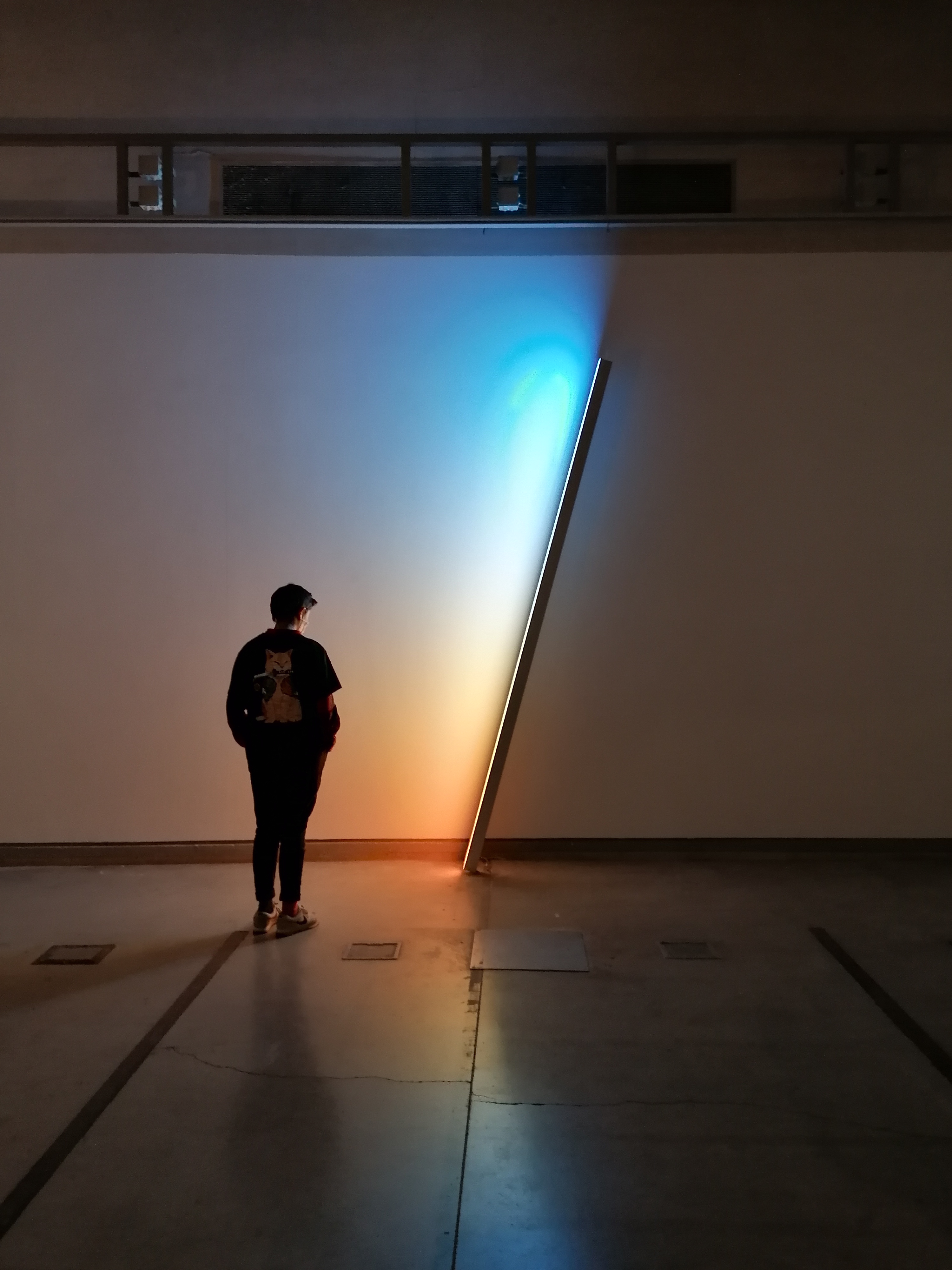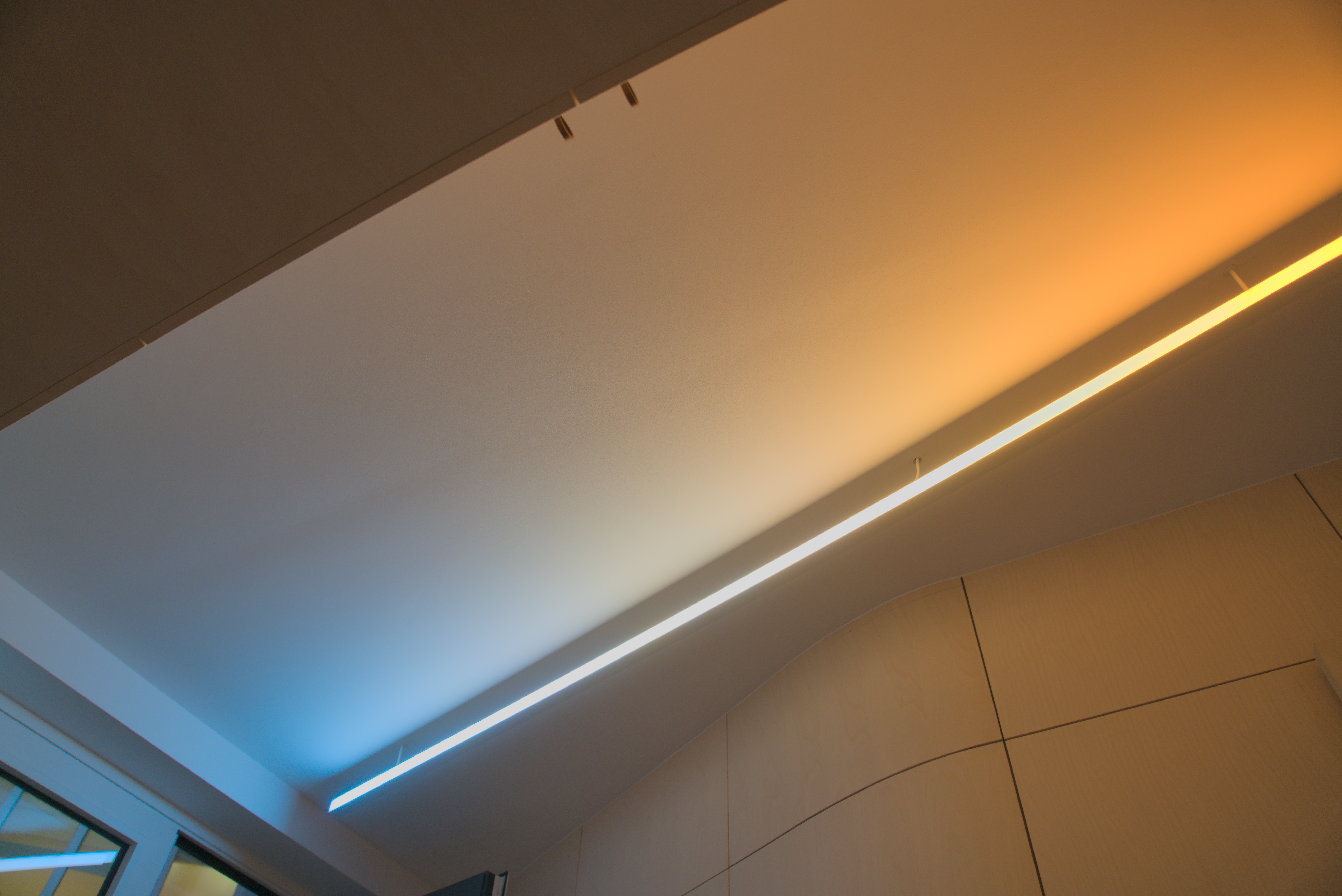
Lampe ciel 1.2
2020
Aluminum, PMMA, LED, phosphors, power supply cable
300 x 8 x 6 cm
The series was born from a question: why do lighting devices known as "daylight" produce a diffuse and cold light that evokes more the neutral uniformity of a photographic studio than the visual effect of natural light on a clear day? Comparing artificial light to natural light, the main difference lay in the shape of the light source. At the end of the day, natural light comes from the sky, a hemisphere that presents a sequence of colored lights coming from different points in space: orange at the horizon, blue at the zenith. This sequence illuminates the landscape and objects with different colors coming from different heights, creating chromatic modulations and colored shadows that are absent in uniform lighting. The simplest shape to reproduce this light was a long luminous rectangle: imagine yourself at the end of a day, in clear weather, in a landscape where you can see the horizon. The sun has just disappeared, but the sky is still very bright. Choose a point on the horizon and draw a line from that point to the zenith. The line thus formed will be a sequence of colored lights going from orange to blue, passing through white. It is this sequence is reproduced in the Sky Lamp, using thousands of light-emitting diodes, dividing the space into a shadow area and a light area.

Lampe ciel 1
2019
Aluminum, PMMA, LED, phosphors, power supply cable
300 x 8 x 6 cm



Lampe ciel 3
2021
Aluminum, PMMA, LED, phosphors, power supply cable
200 x 4 x 4 cm
Permanent installation, LMNO, Brussels